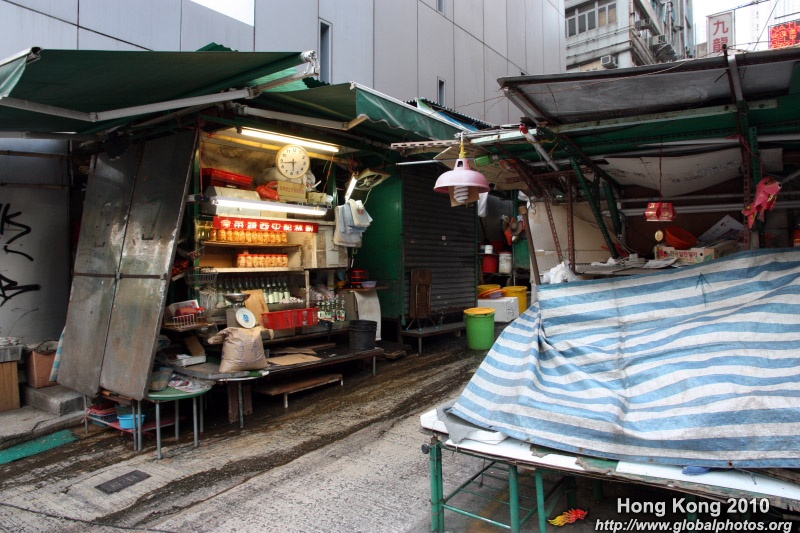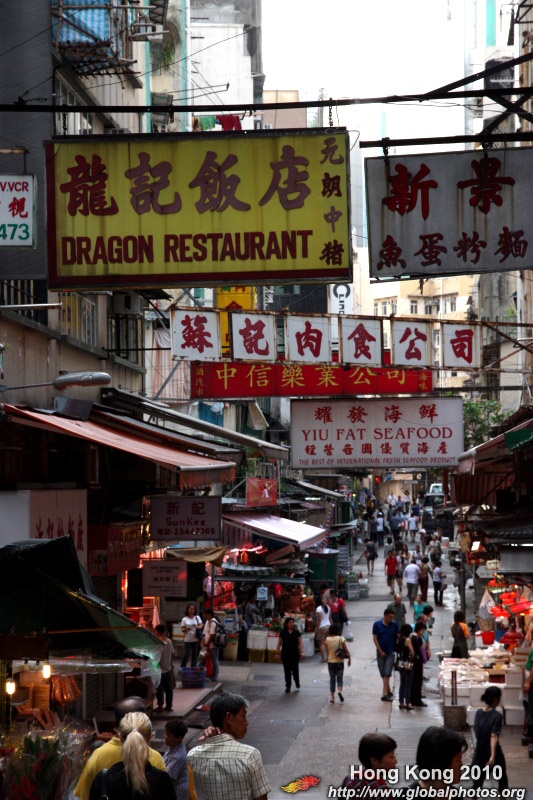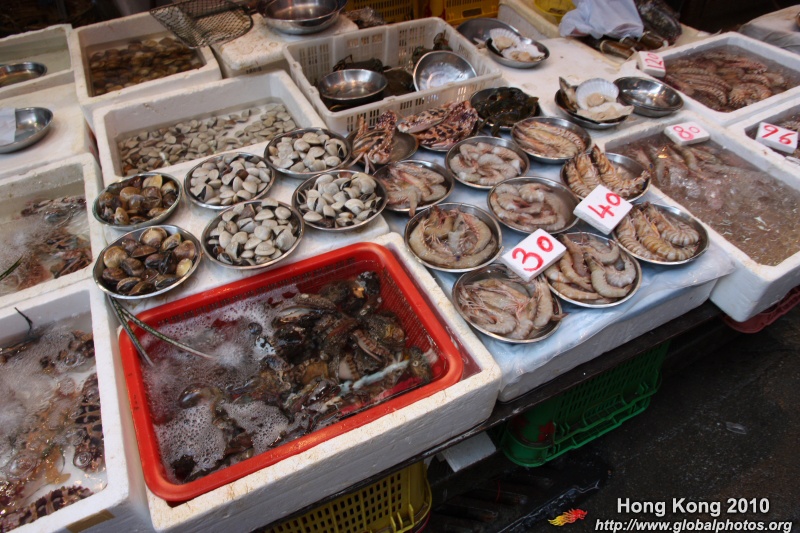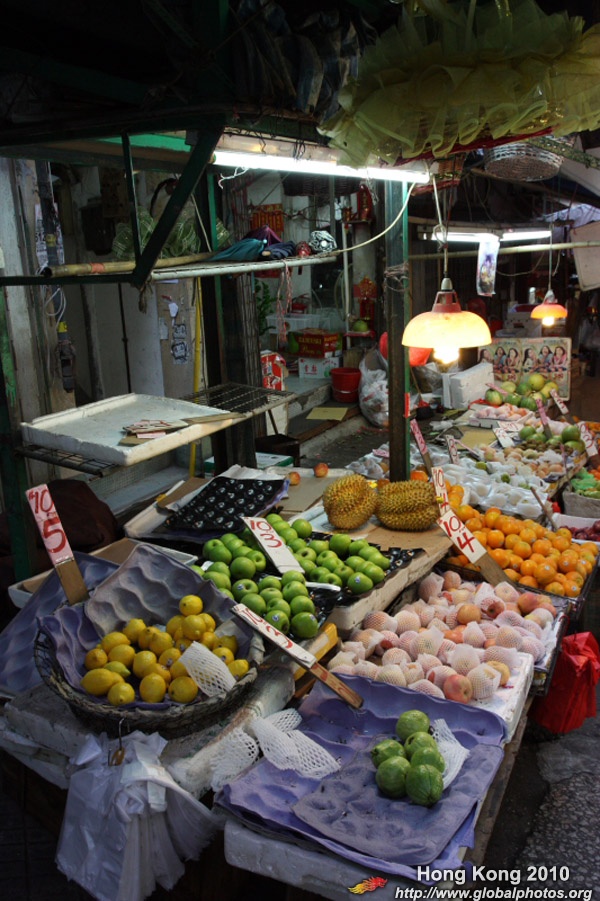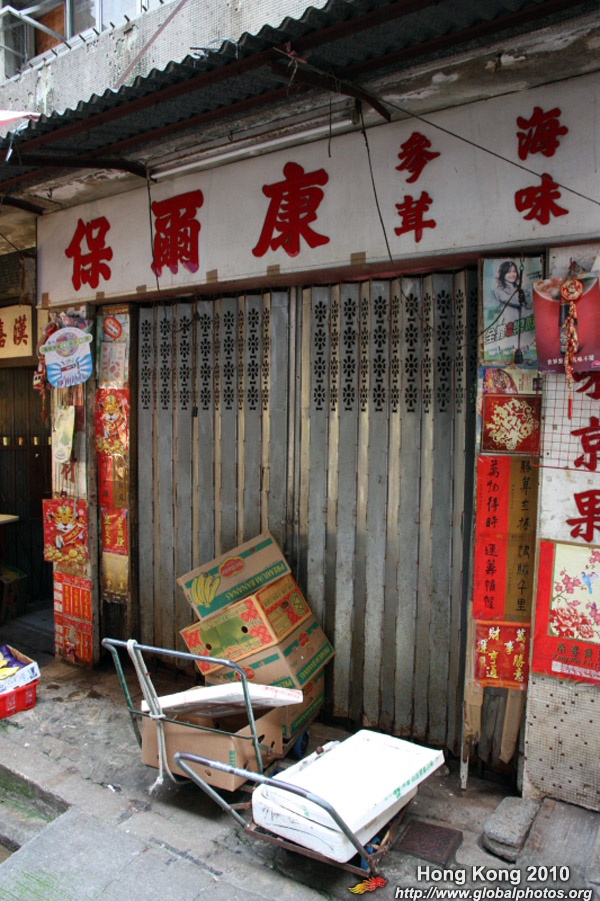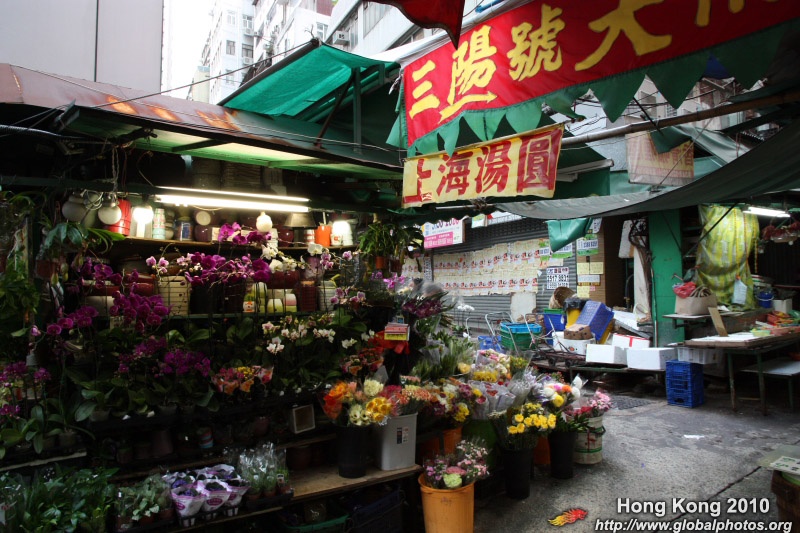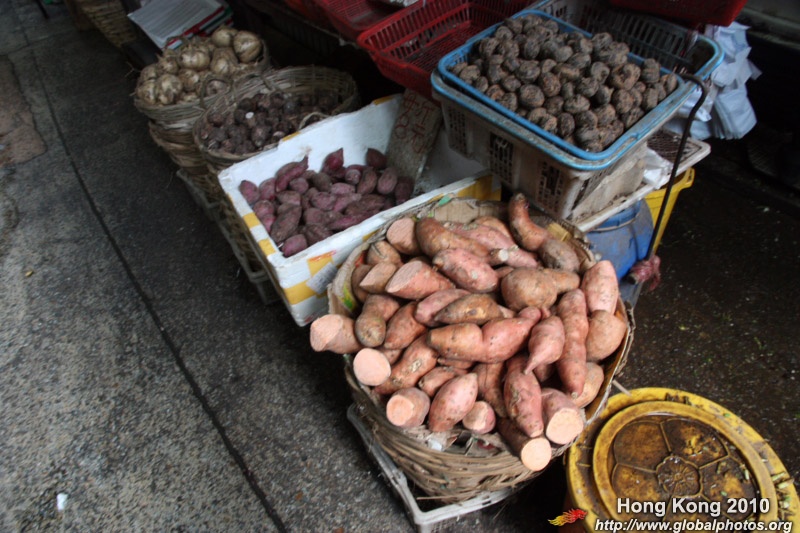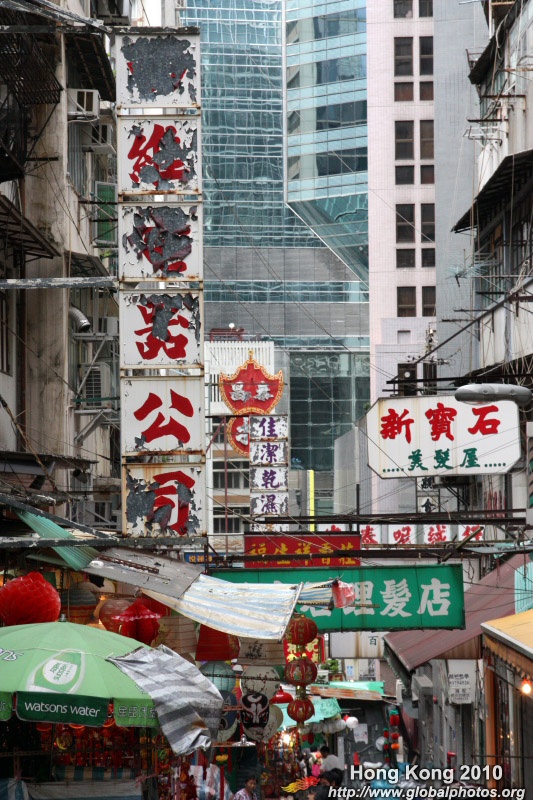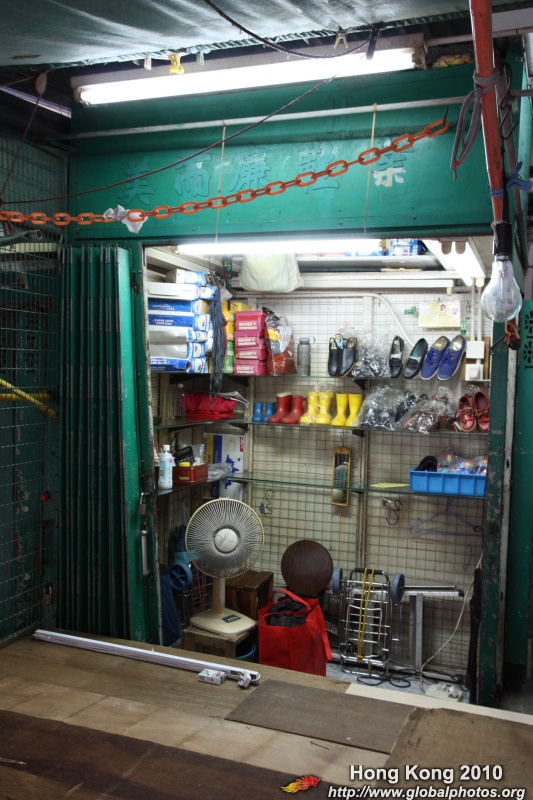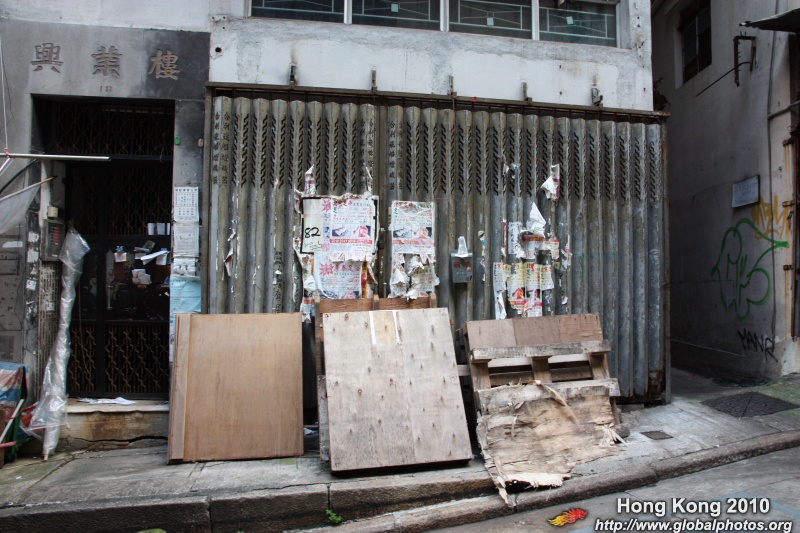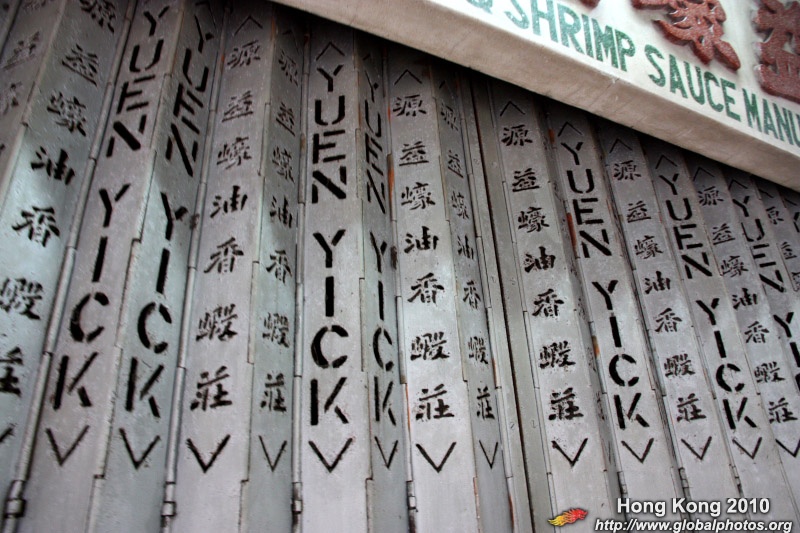Hong Kong Photo Gallery - Graham Street

The wet market around Graham Street has a history going back some 160 years, just shortly after Hong Kong became a British colony. Being close to the waterfront back in the day, it was a popular place to buy seafood. It grew and spread to neighbouring streets, and today serves Central's office workers where you can get your fresh meat, fish, and vegetables along the sloping streets.The city's last surviving open-air wet market consists of actual shops lining the streets as well as metal shacks running on the street itself. It now falls victim to the area's success and gentrification. The Urban Renewal Authority announced a HKD $3.8 billion redevelopment scheme along with Peel Street in 2007, demolishing a number of historic shophouse tenement buildings and displacing a number of hawkers. Replacing them will be 2 residential towers, a hotel, and an office tower. While the plan includes rebuilding an "old shops street" afterwards, critics have expressed worries this historic market will disappear and turning a profit will take priority over preserving heritage, as well as the government organization's redevelopment strategy in general. Here are some photos from 2010 before much of the demolition took place.
Tenants have been moving out in phases since 2013 and by 2018, construction was well under way while remaining businesses continued to operate amidst the noise and dust.
2020
2021
2022
Construction continues in 2024 although a new residential building has opened and another is taking shape.
The Kowloon Soy Company was established in 1917 through a partnership between 3 families and has been selling here since the 1960s with a selection of soy sauce, pickles, and fermented tofu. Initially an export business, they were forced to change their name during World War II by the Japanese conquerors from Mee Chun, which had a character that resembled America, to Kowloon, for their location in Kowloon City. The war also stopped exports so they began to sell their products locally. Their famous soy sauce is made from old methods, with the best type being made from soybeans fermented in clay vats under the sun for 3 months - the slow way.
| |||
The Guardian article on premium soy sauce | SCMP article on Kowloon Soy
Hong Kong Gallery Main Page


